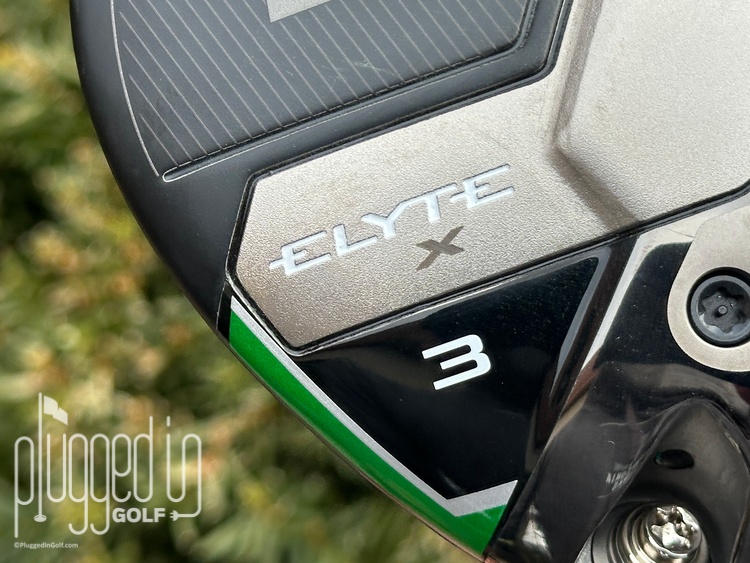50 Words or Less
The Callaway Elyte X fairway wood offers the largest footprint for maximum forgiveness. Strong ball speed across the face and high, easy launch. Noticeable draw bias.
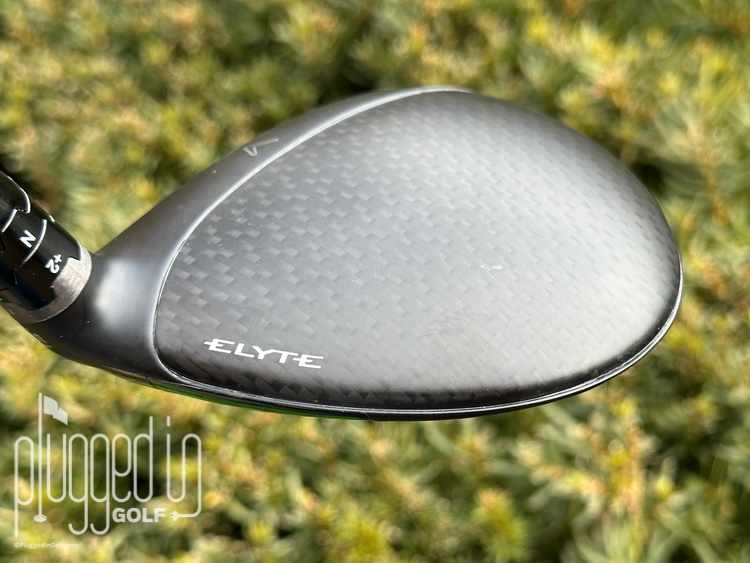
Introduction
No other OEM is offering as expansive a range of fairway woods as Callaway in 2025. From Tour-style to lightweight, they have every golfer covered. In this review, I’ll examine the Callaway Elyte X fairway wood, the model built for maximum forgiveness and high, easy launch.
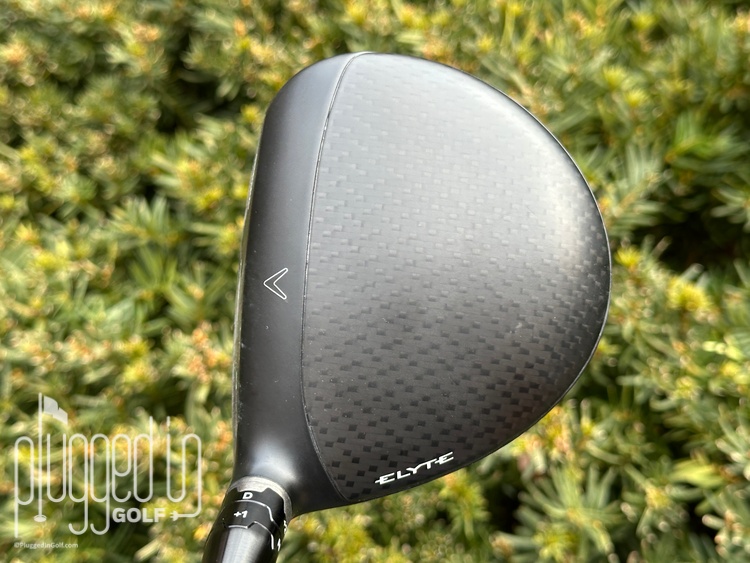
Looks
Callaway describes the shape of the Elyte X fairway wood as “forgiving, stretched back.” While it is a bit longer from front to back than the standard Elyte fairway wood [review HERE], what stands out more to me is the fullness of the footprint. Where the other Elyte FWs are tidy and slim, the Callaway Elyte X fairway wood bulges in the heel. If you get confidence from seeing more club behind the ball, this is the model for you.
Moving beyond the shape, everything about the Elyte X FW mirrors the standard Elyte FW. The Thermoforged Carbon crown stands out with a bolder look than most carbon crowns. In the bag, the Elyte X has the same large “E” across the back and is only distinguished from the core Elyte FW by the small “X” under “Elyte”.
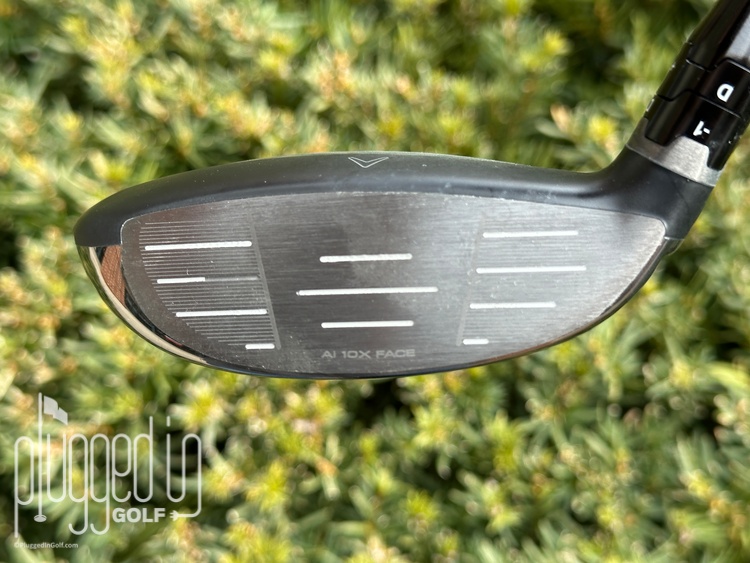
Sound & Feel
The Callaway Elyte X fairway wood manages to provide an exciting impact sound without being any louder than average. On center, it has a sharp, explosive whip crack sound. Mishits transform into more prototypical fairway wood “tink.” This is a strong piece of audio feedback that makes it very clear when you’ve hit a premium shot.
This stark contrast in sound is mirrored in the feel. On center, the feel is propulsive; you get a visceral sense that the ball is going a long way. However, when you strike the toe or heel, the feel gets thin and weak. This feedback oversells the penalty for mishits – this is a very forgiving club – but it’s a good reminder that your process was flawed.
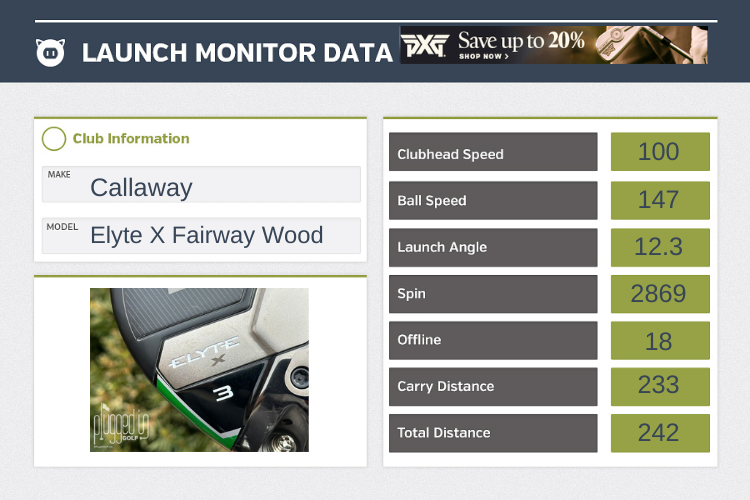
Performance
I was exchanging messages with a reader about fairway woods recently, and I made the comment, “It’s amazing what a difference 1/8 of an inch can make.” My recent experiences with the entire Callaway Elyte fairway wood line drives home the truth of that statement. Though the differences between the four models I tested are objectively quite small, they made a significant difference in my results.

The Callaway Elyte X fairway wood is billed as the most forgiving of the Elyte fairway woods with a recommended handicap of 0 to 30+. I put that claim to the test during my testing sessions. While I have improved my fairway wood play in the last couple seasons, I am very sensitive to the size and shape of these clubs, and this larger footprint does not fit my eye. Despite making worse contact than I did with the Elyte Triple Diamond fairway wood [review HERE], the Elyte X FW kept my ball speed acceptably high and elevated my shots onto reasonable trajectories.
This model is designed to be “High” launching, just like the Elyte Titanium fairway wood [review HERE], with “Mid” spin. When I was able to string together quality strikes, I did see the Elyte X launch slightly higher and spin noticeably more than its brothers. The shallow face is an asset for getting the ball off the deck, though it may not be ideal for players who use their fairway woods off the tee frequently.

The other major performance feature of the Callaway Elyte X fairway wood is the draw bias. This is hinted at with the heel-heavy shape and the face that sits slightly closed. To me, the draw bias is evident but not overwhelming. It didn’t take a huge effort to keep the ball straight, but the club clearly prefers to turn the ball over. If you need this club to bust a stubborn slice, you can dial up the draw bias at the adjustable hosel (available in the 3 and 3HL models).
Finally, the Step Sole design creates a noticeable improvement in the turf interaction. Unfortunately, I put this feature to use with the Callaway Elyte X fairway wood more than any of the other models. When I got the club to the ground too early, the Step Sole helped me to retain club speed because less of the sole was dragging in the turf. This feature is like insurance: we don’t like to think we need it, but we’re really happy to have it when we do.
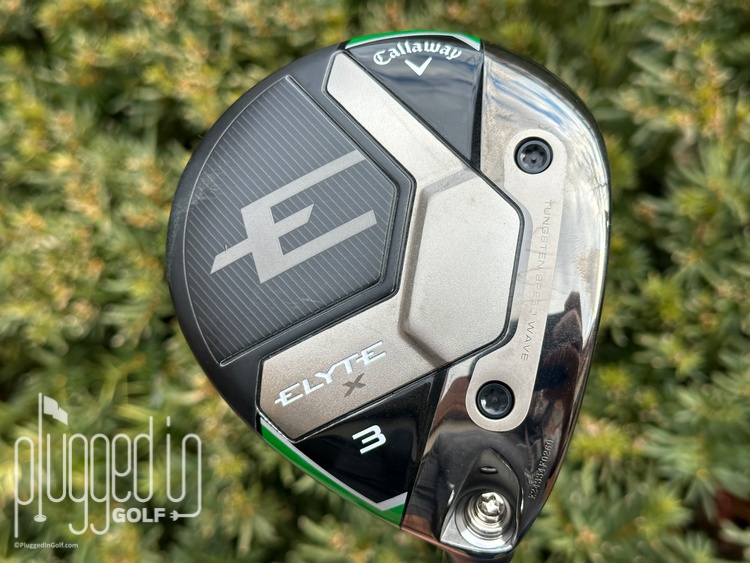
Conclusion
While my experience with the Callaway Elyte X fairway wood drives home the point that you can’t fit on paper, this club is a fine starting point for players looking for maximum forgiveness and higher launch in their long game. Work with your fitter to find the right loft, shaft, and settings, and you’ll be on your way to bringing more par 5s into reach.
Support Plugged In Golf, Buy HERE
Callaway Elyte X Fairway Wood Price & Specs


